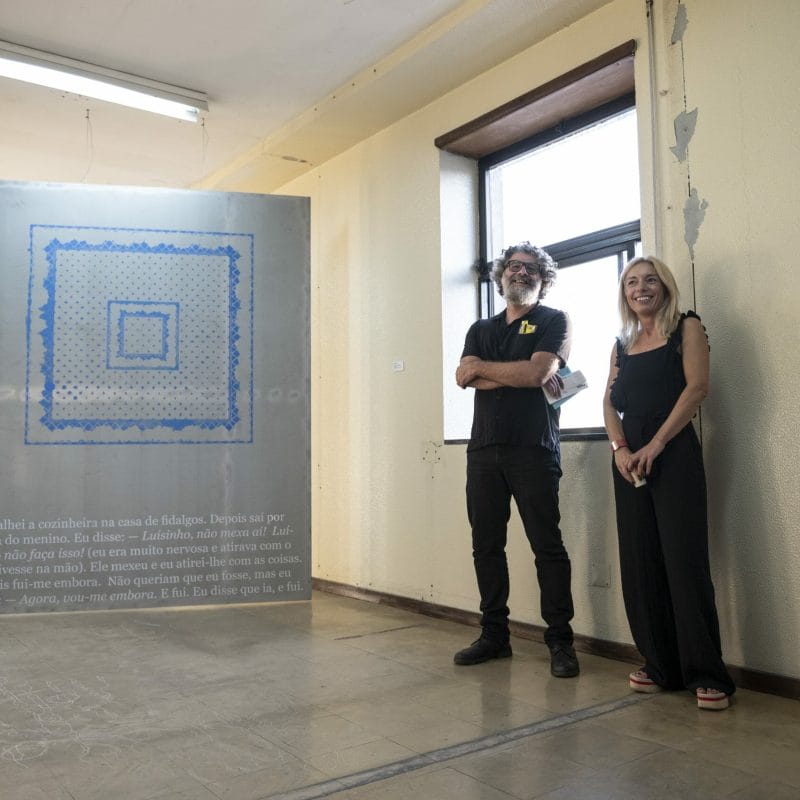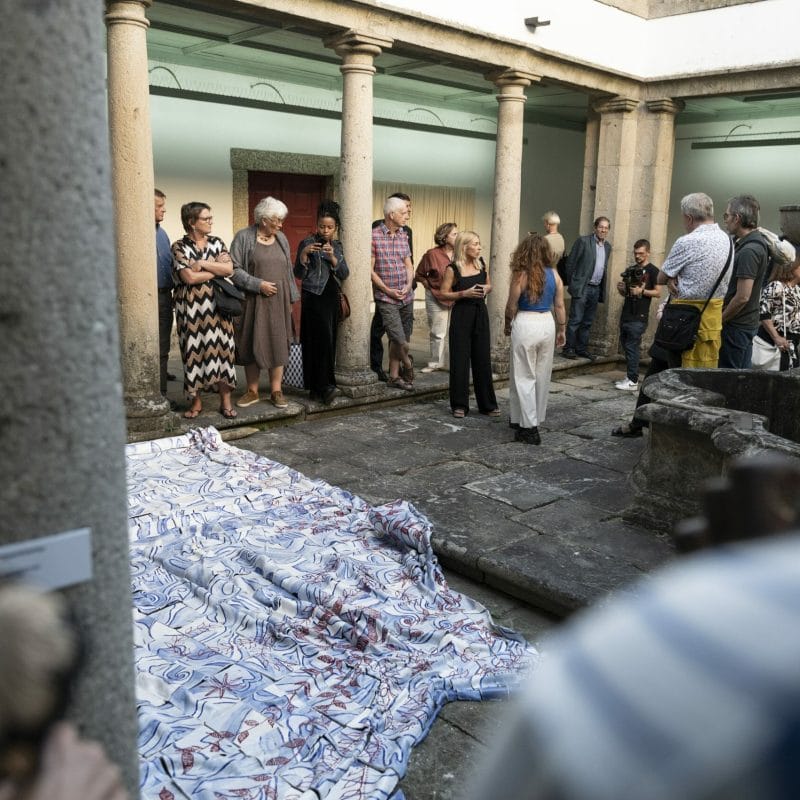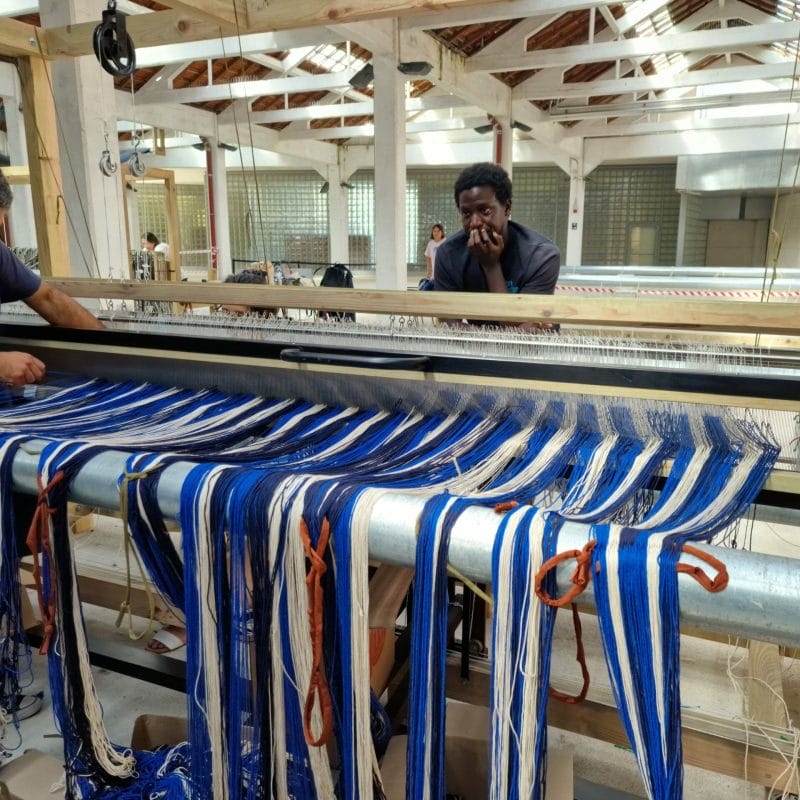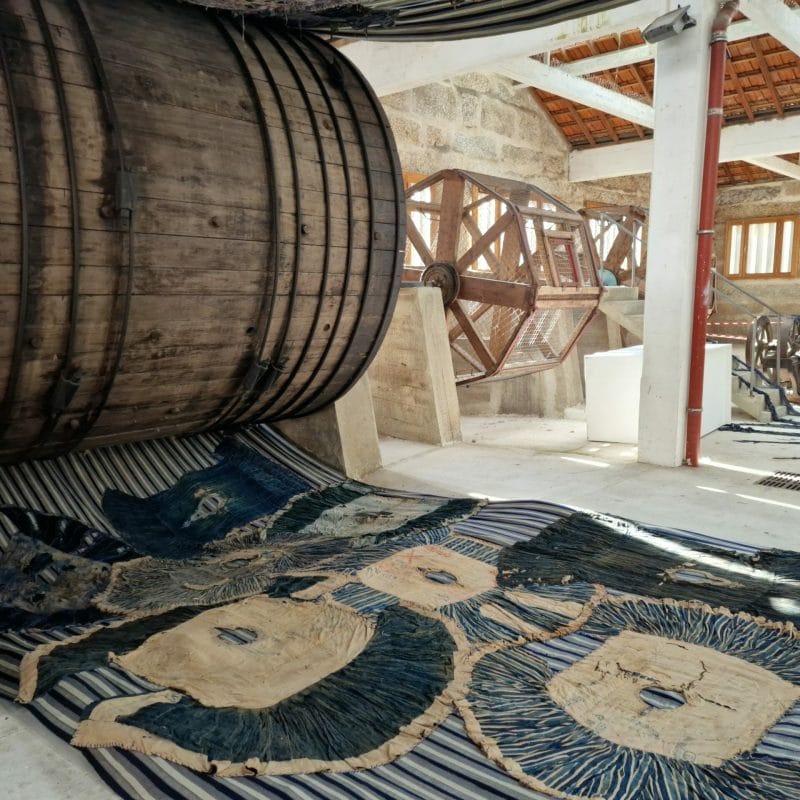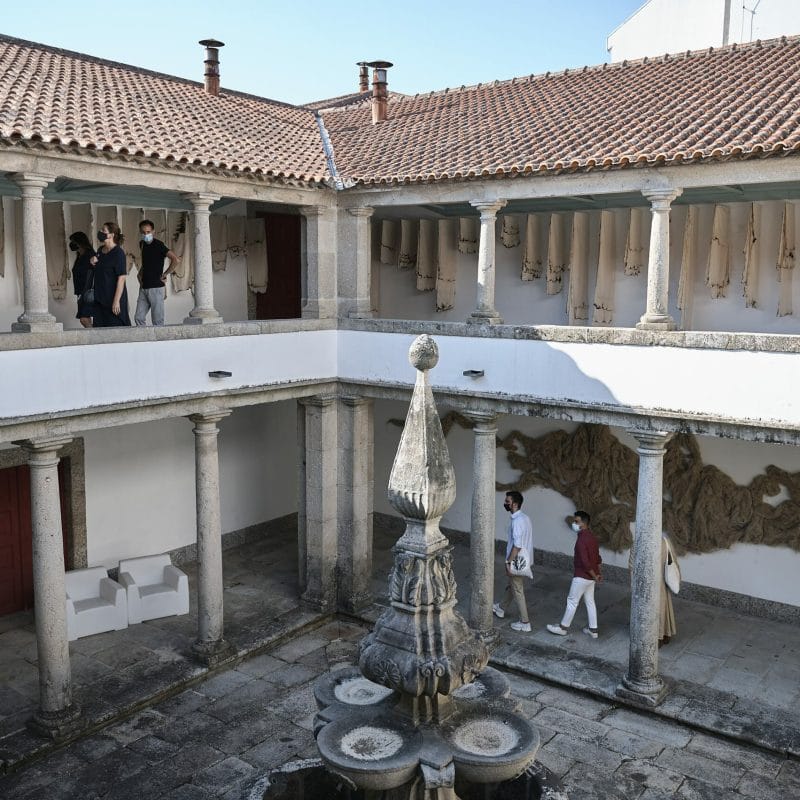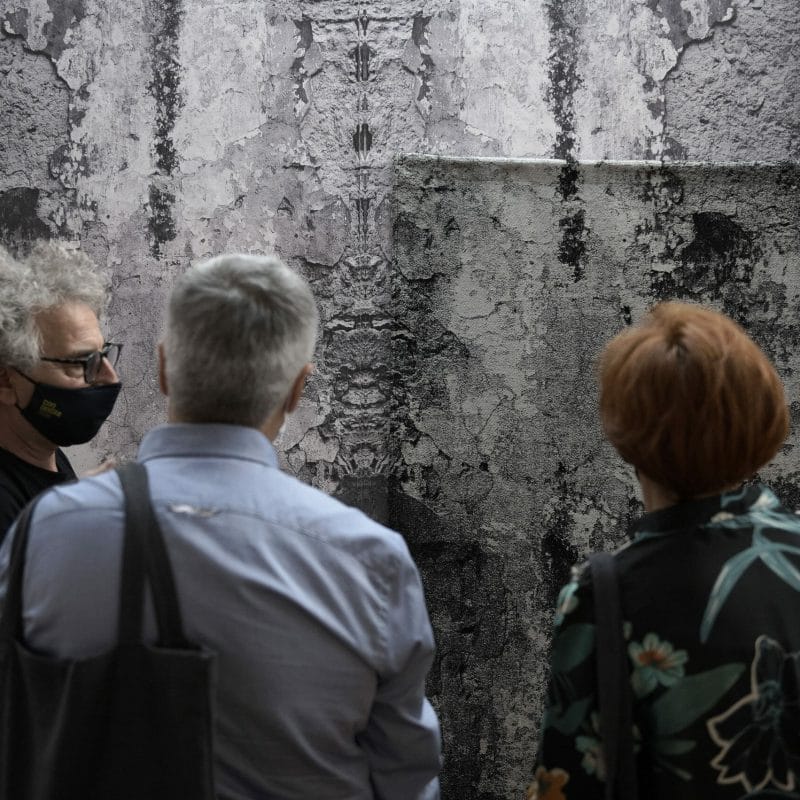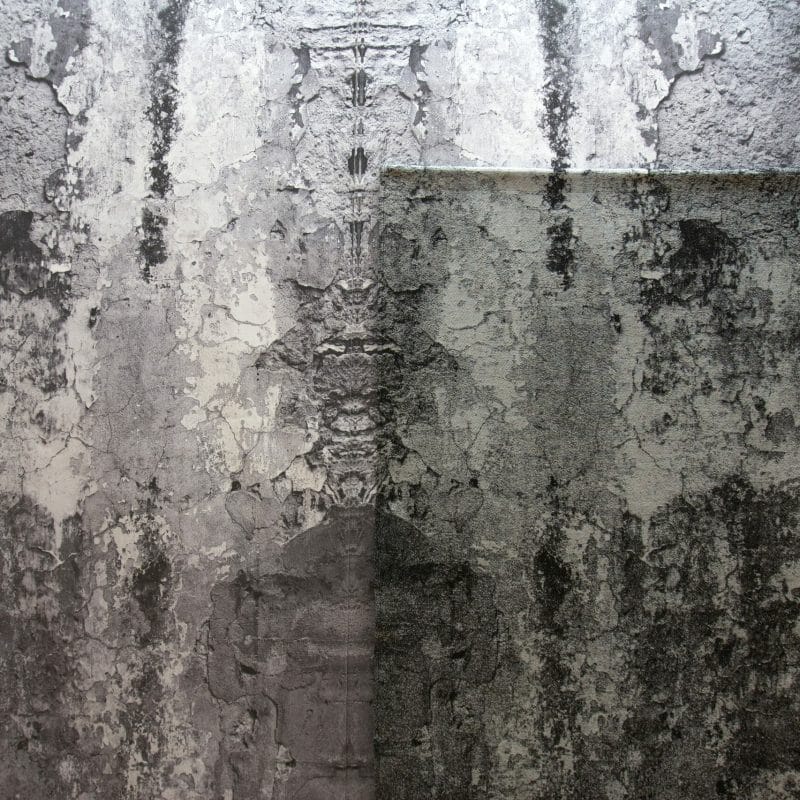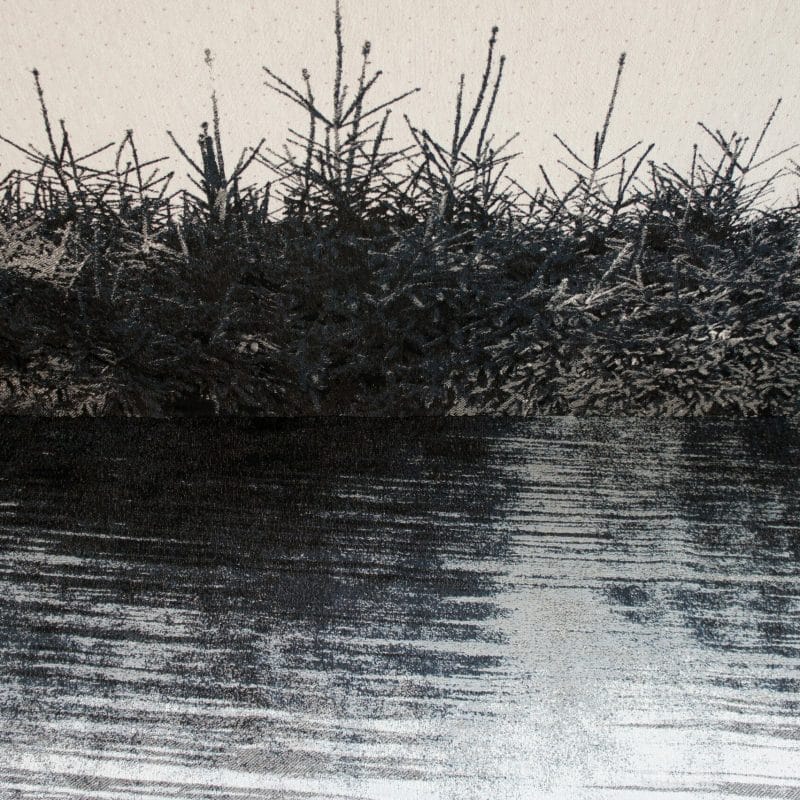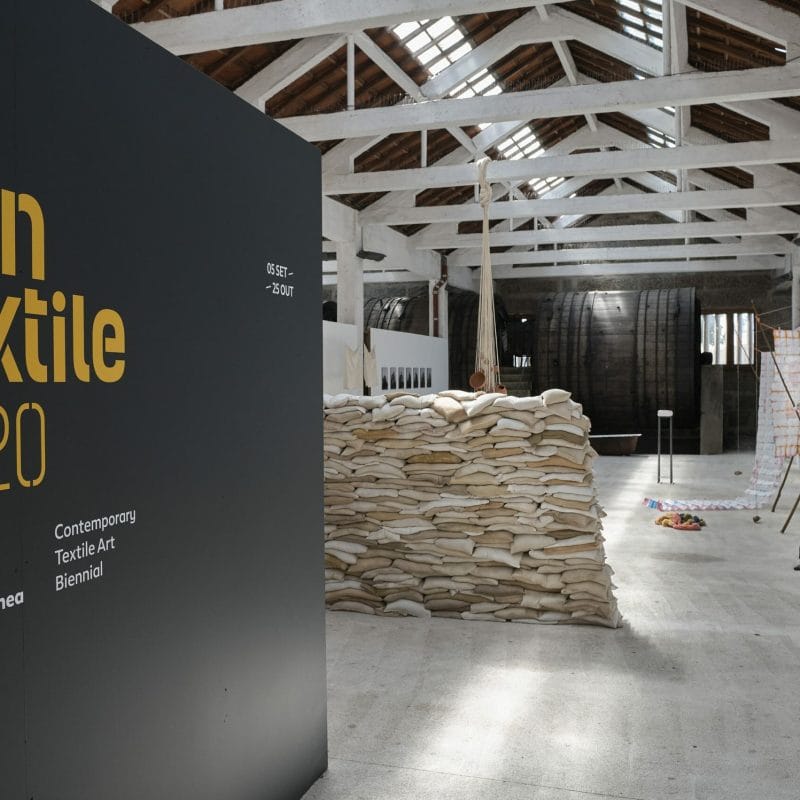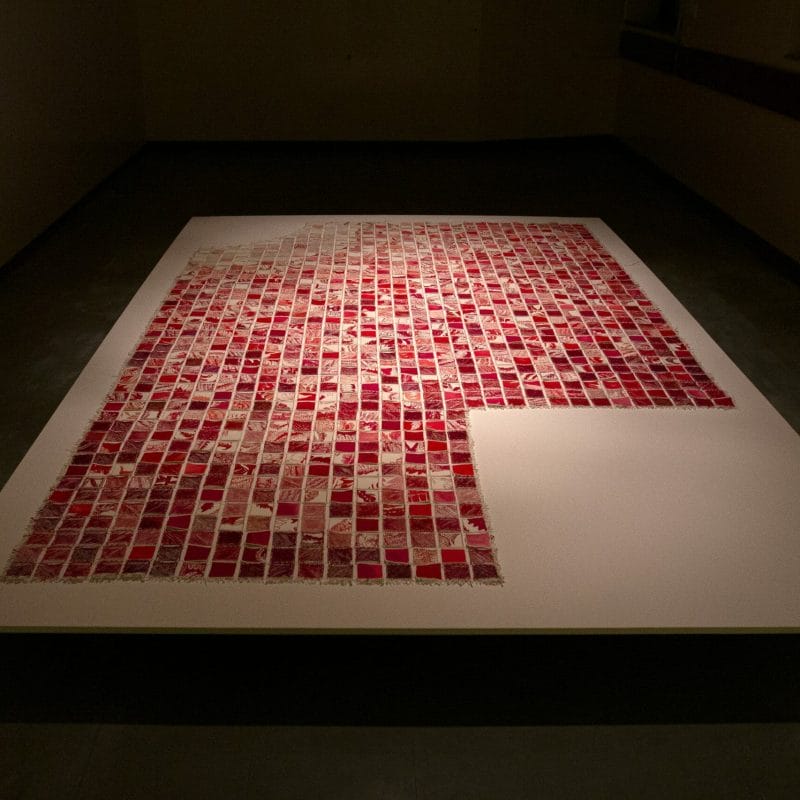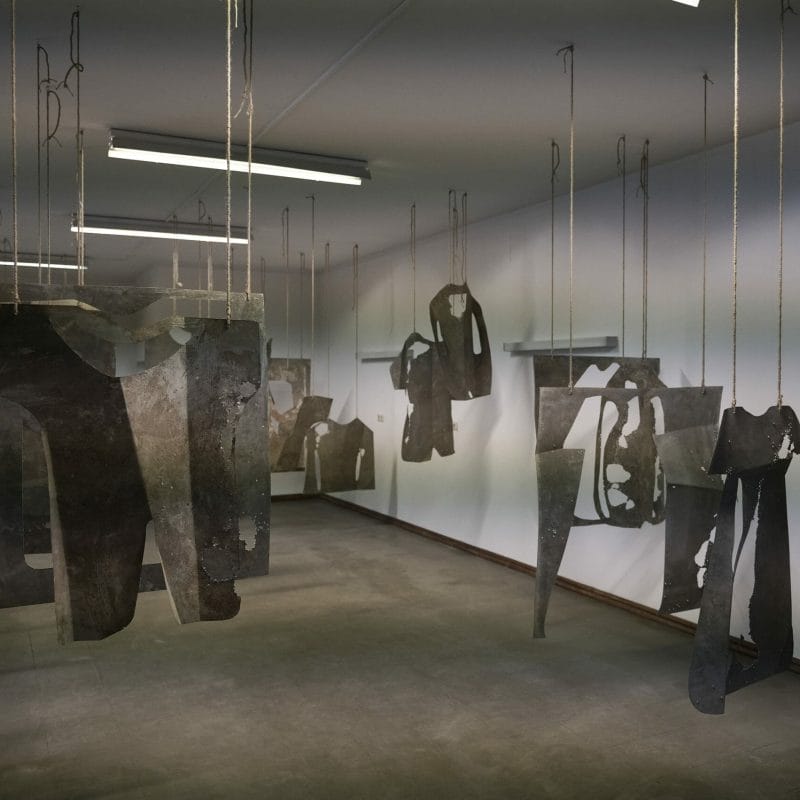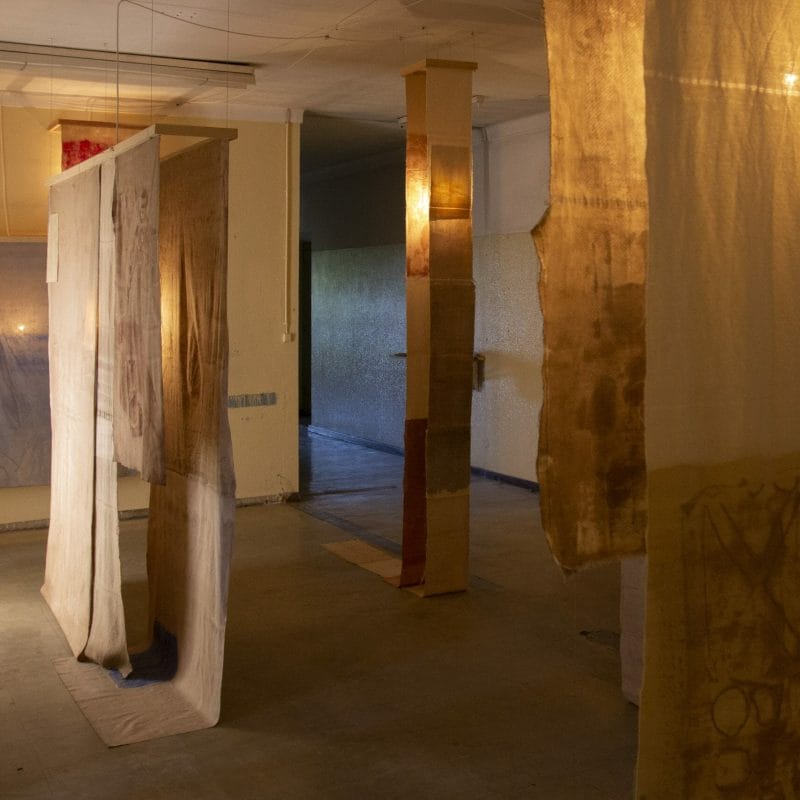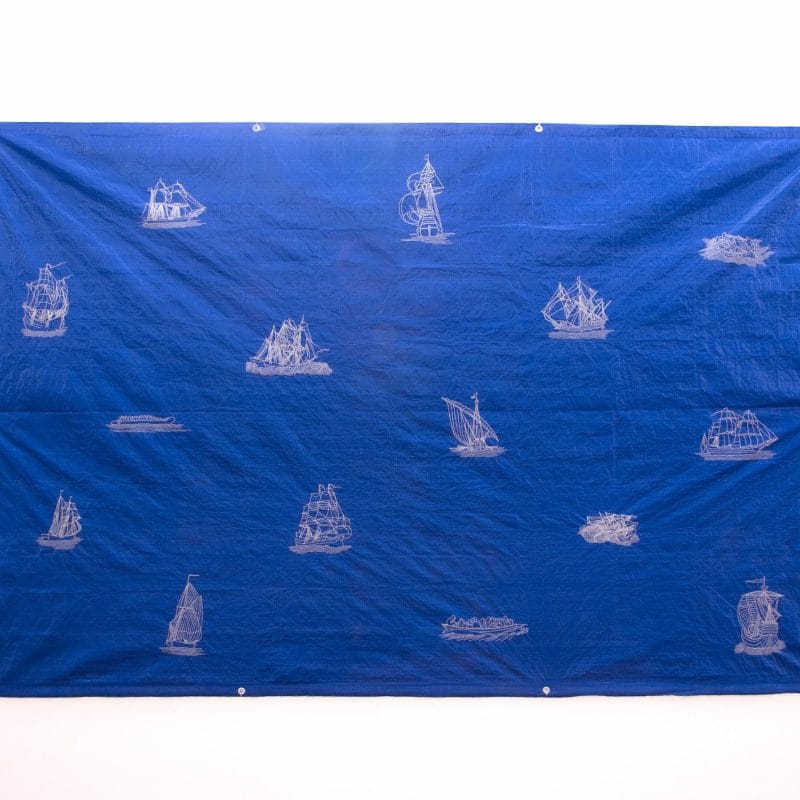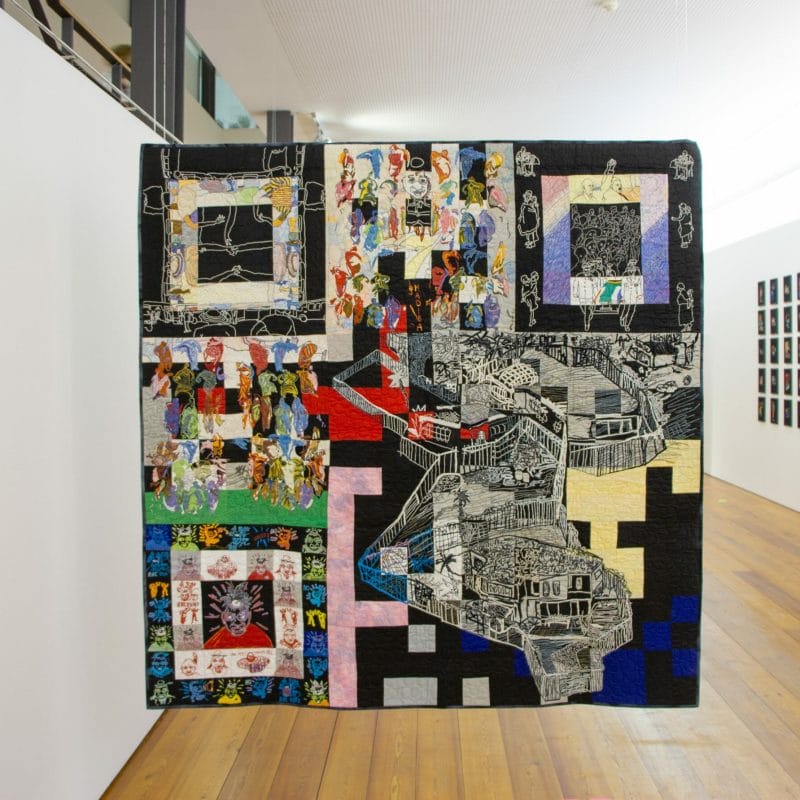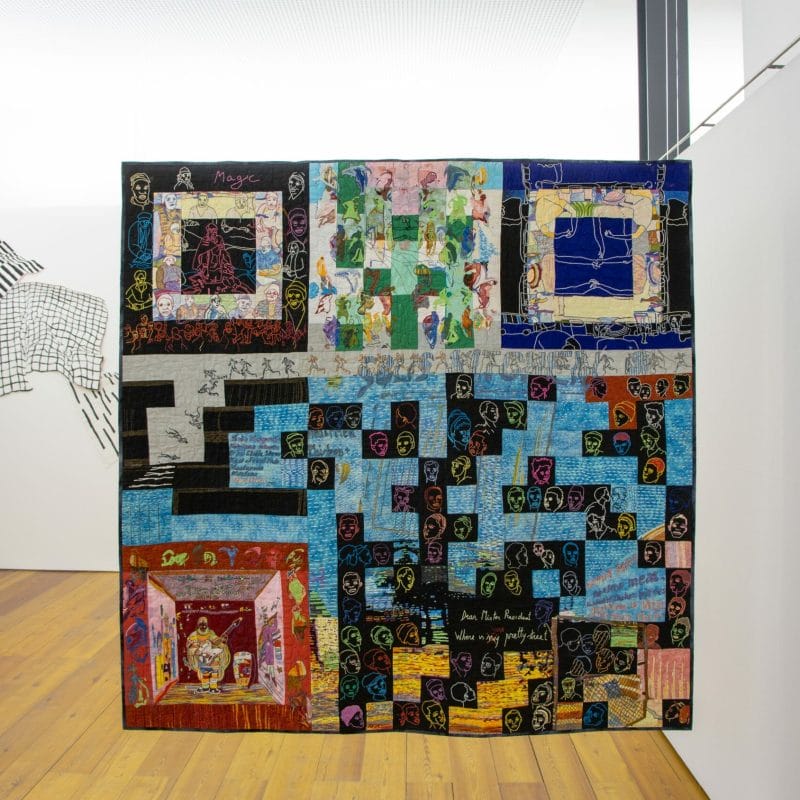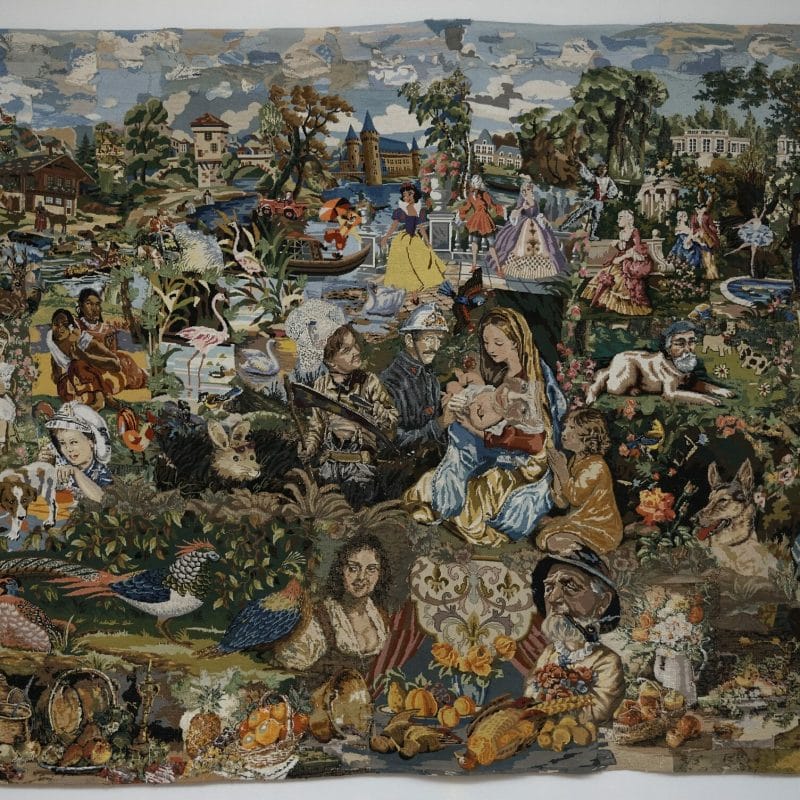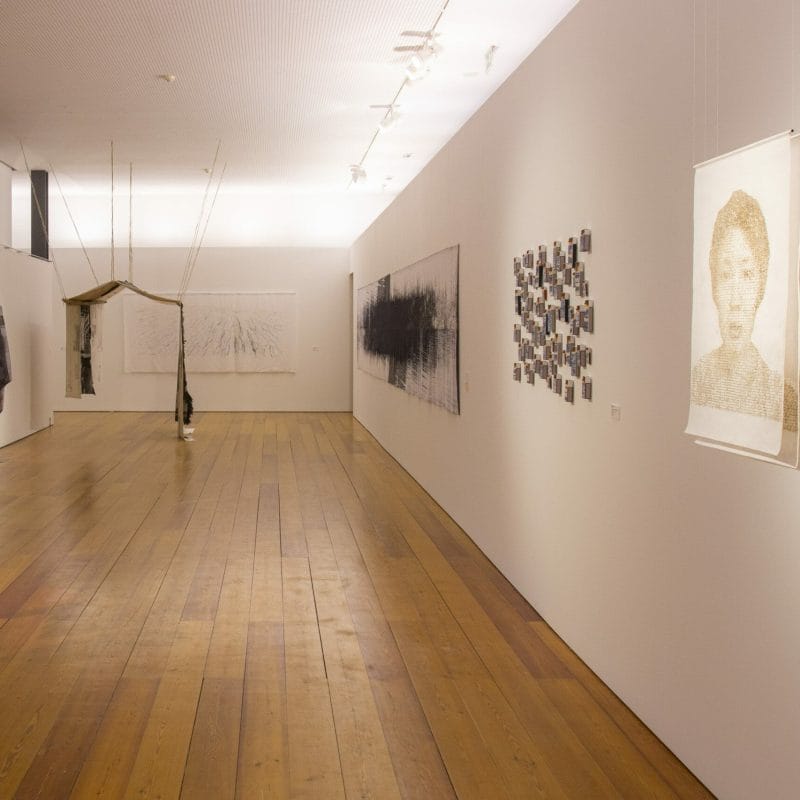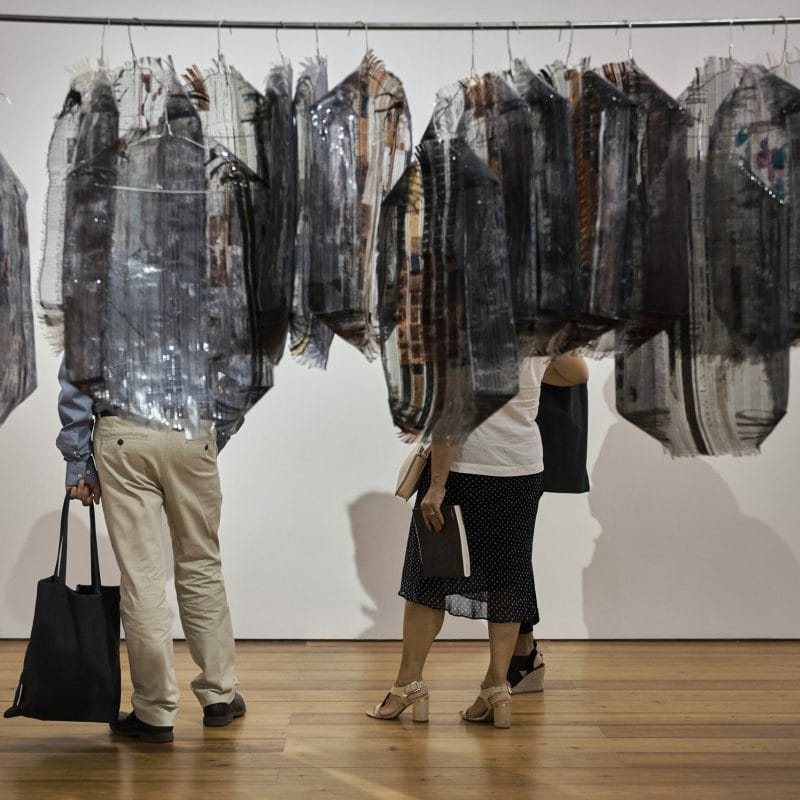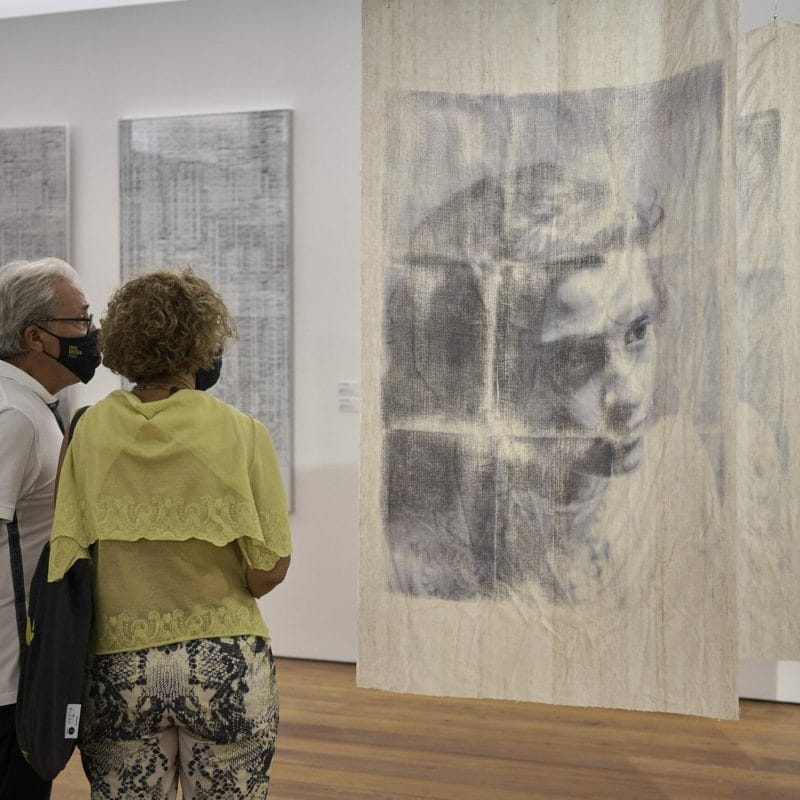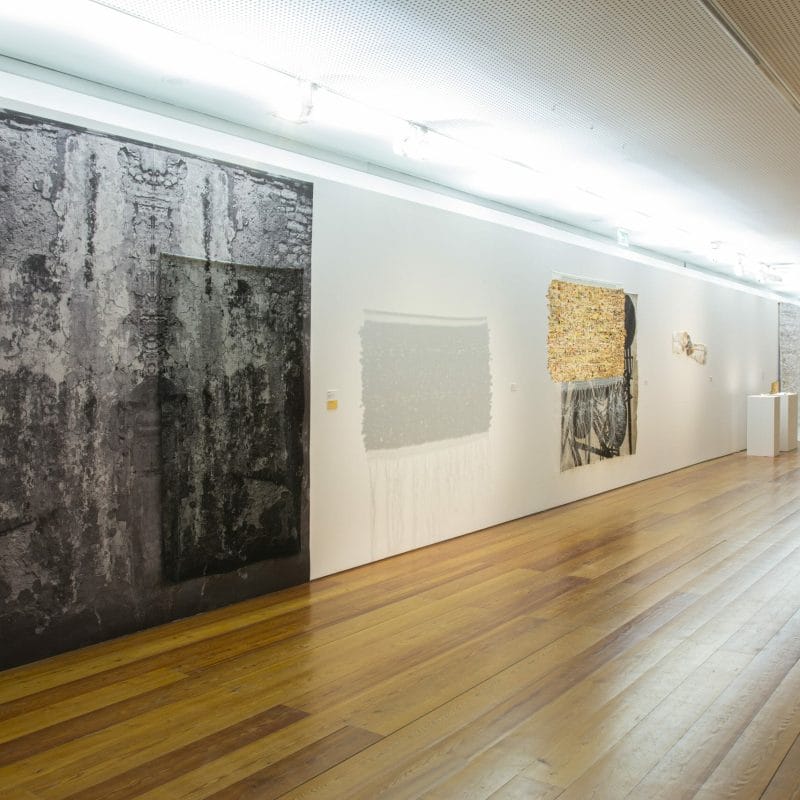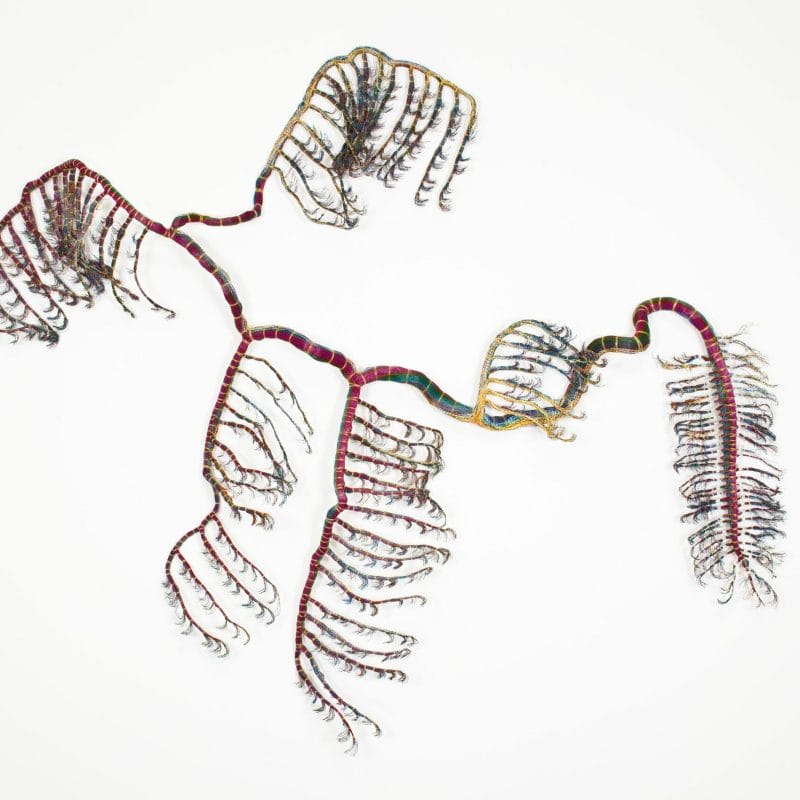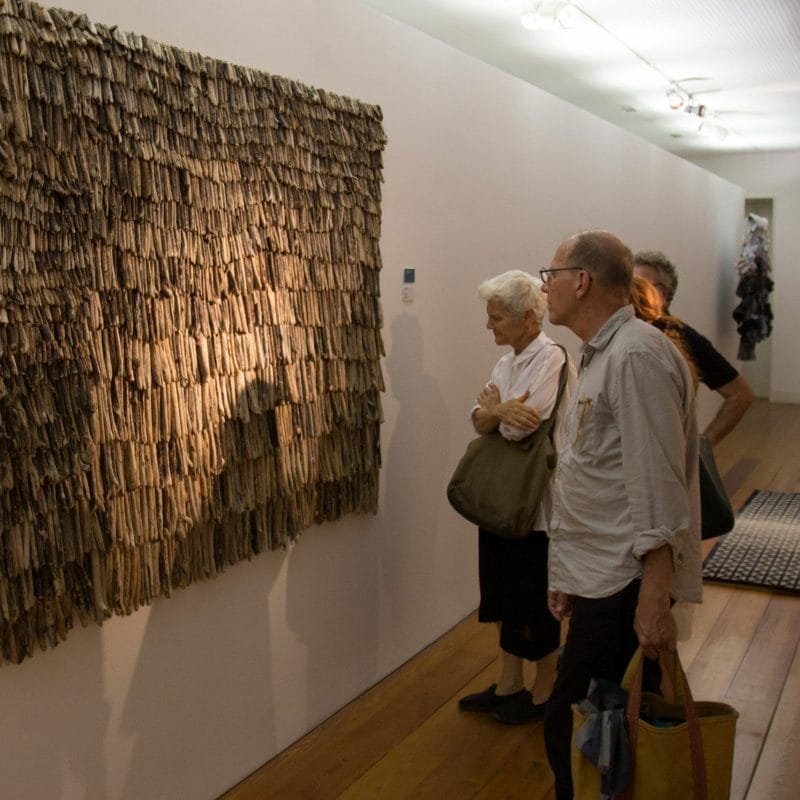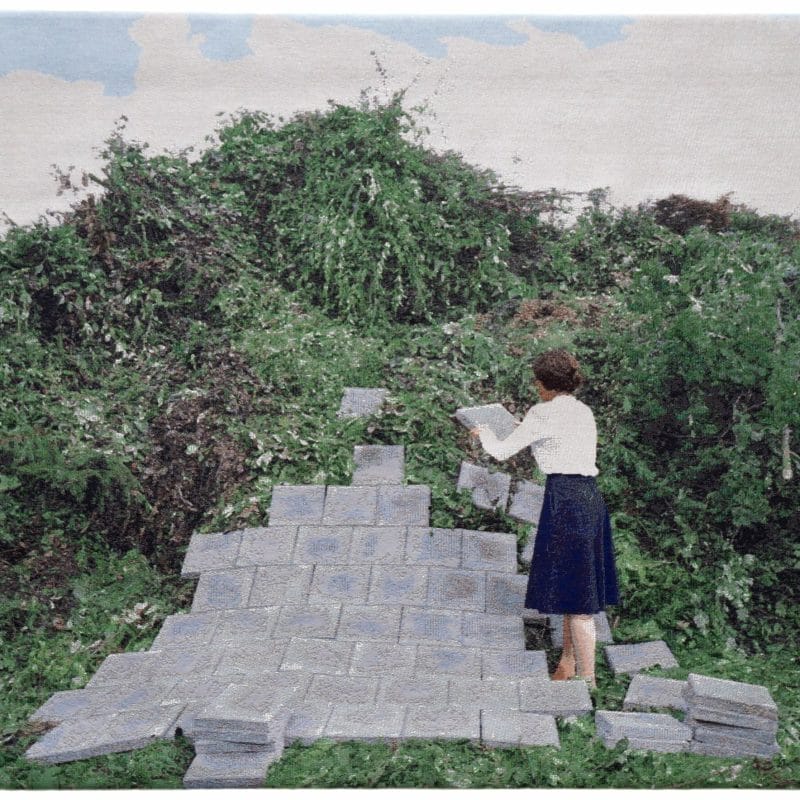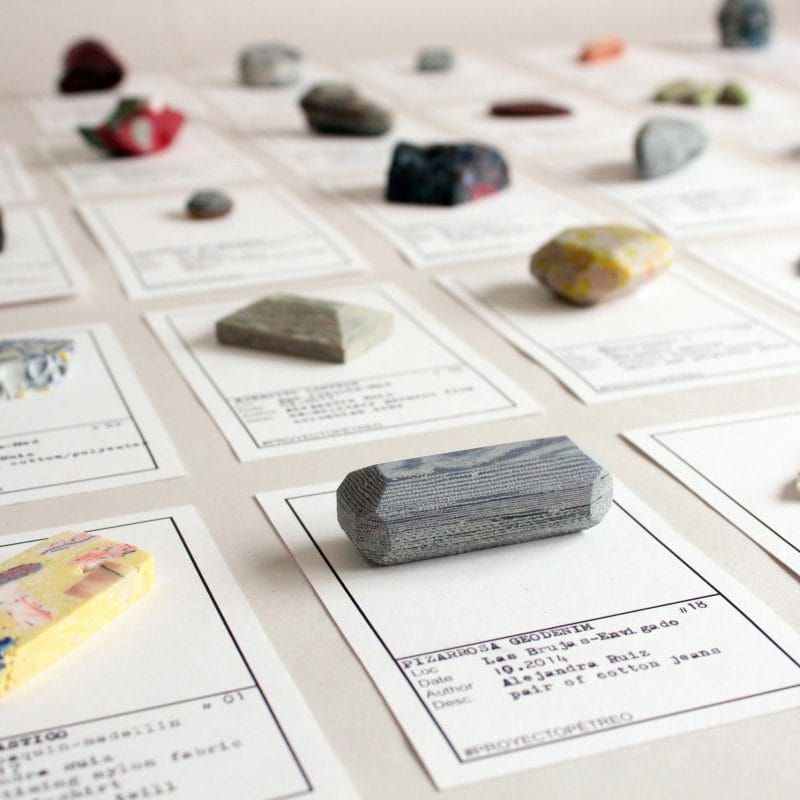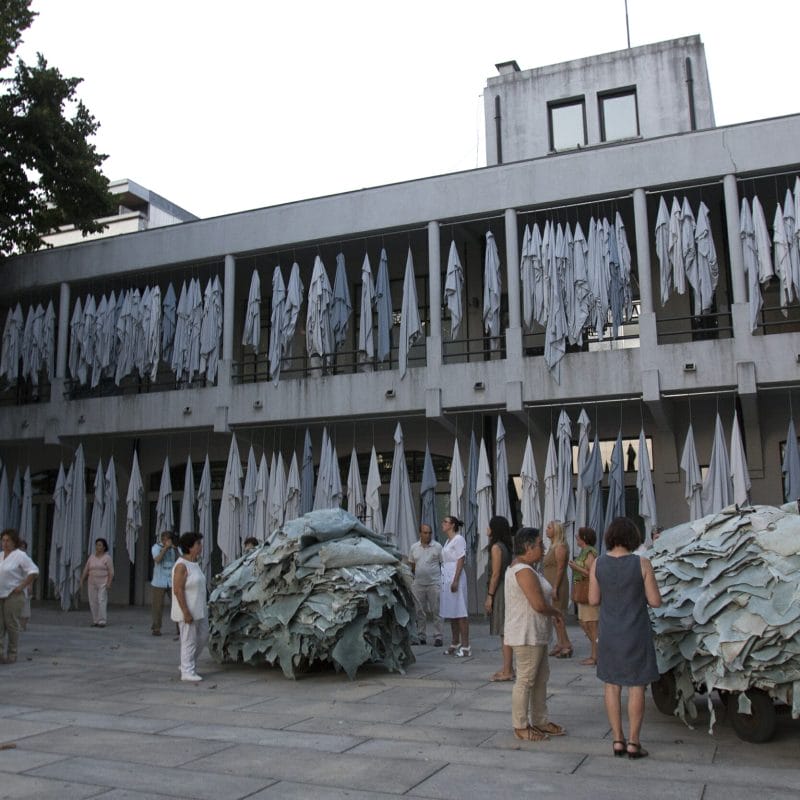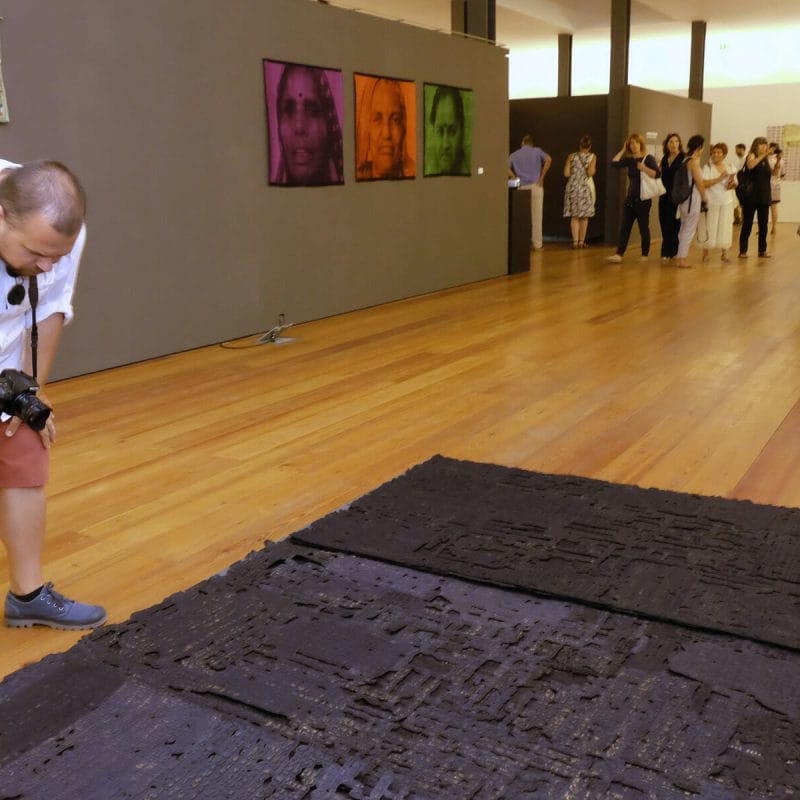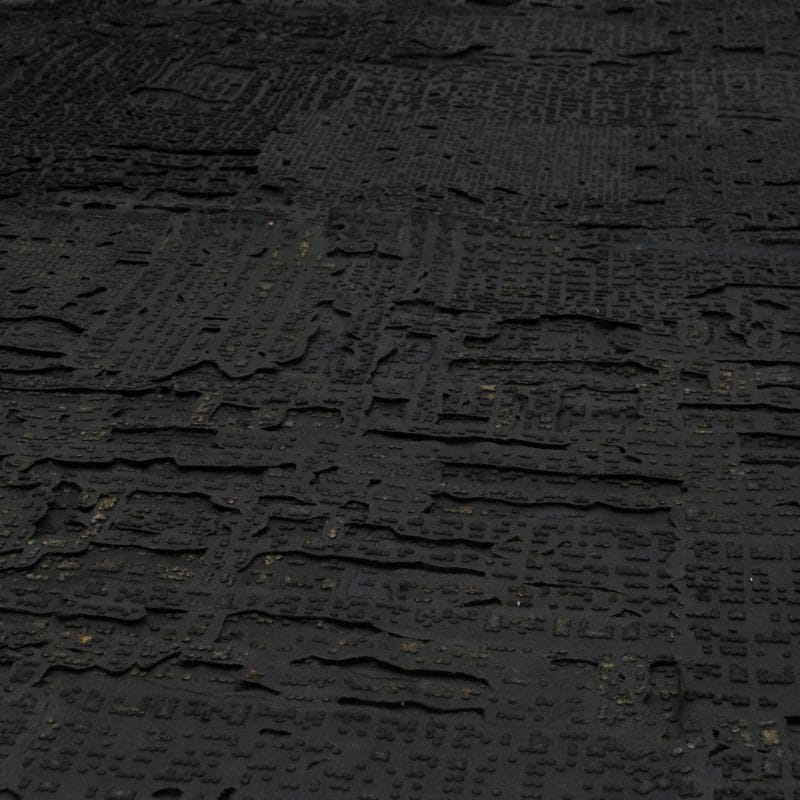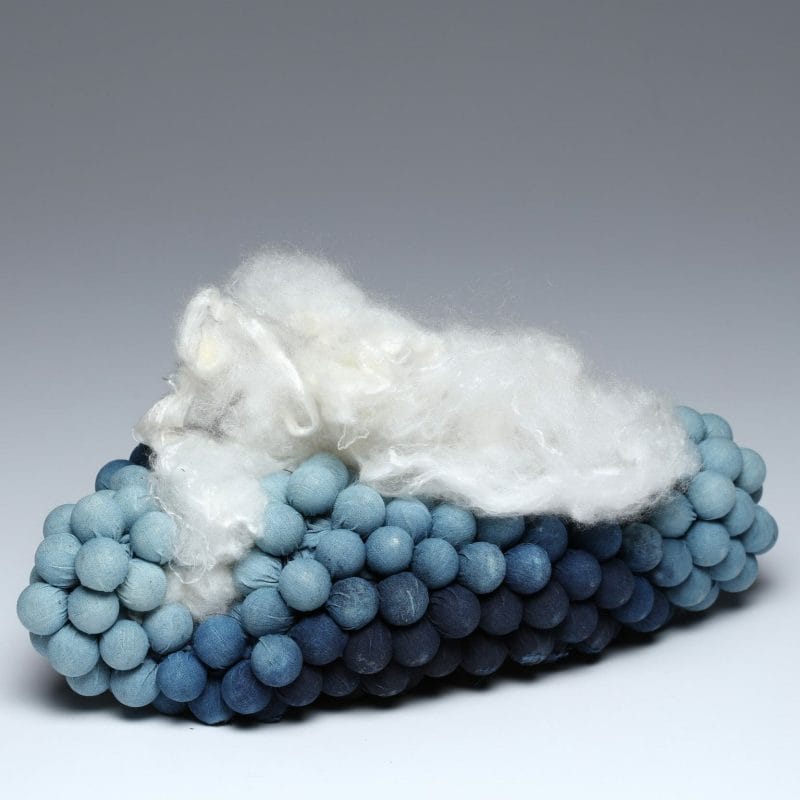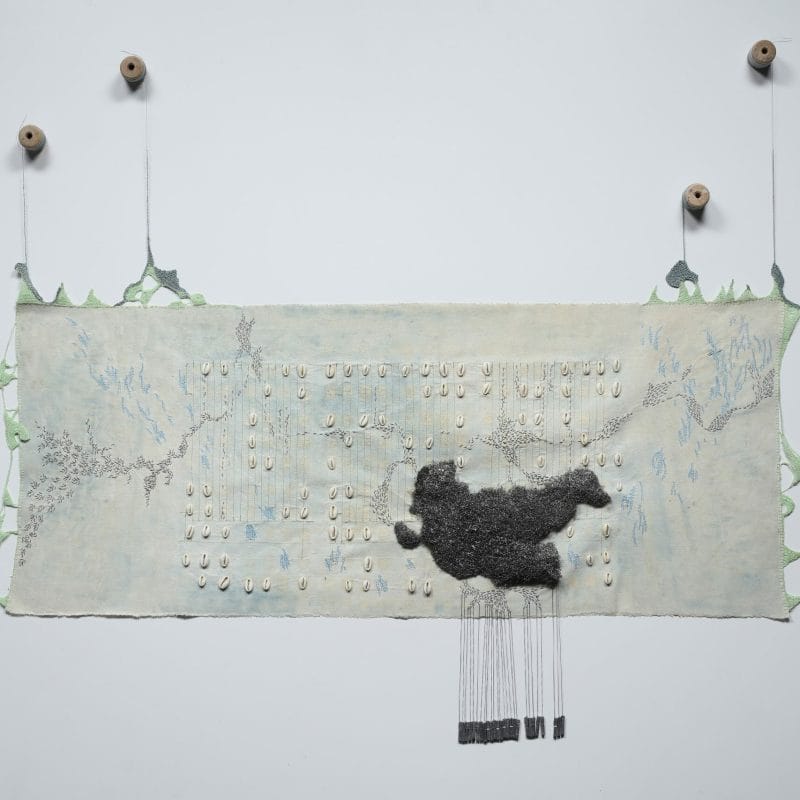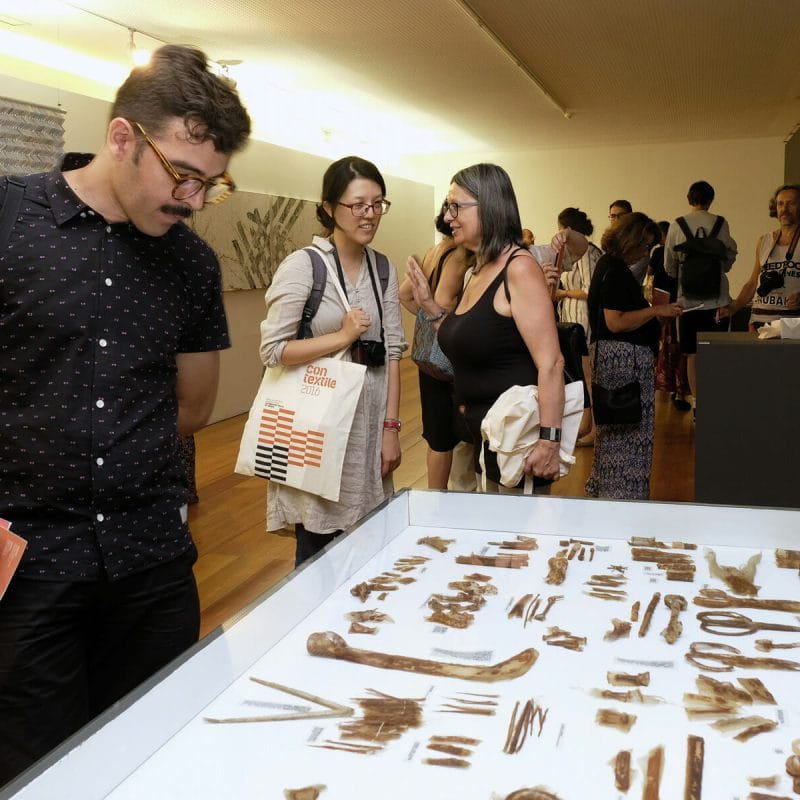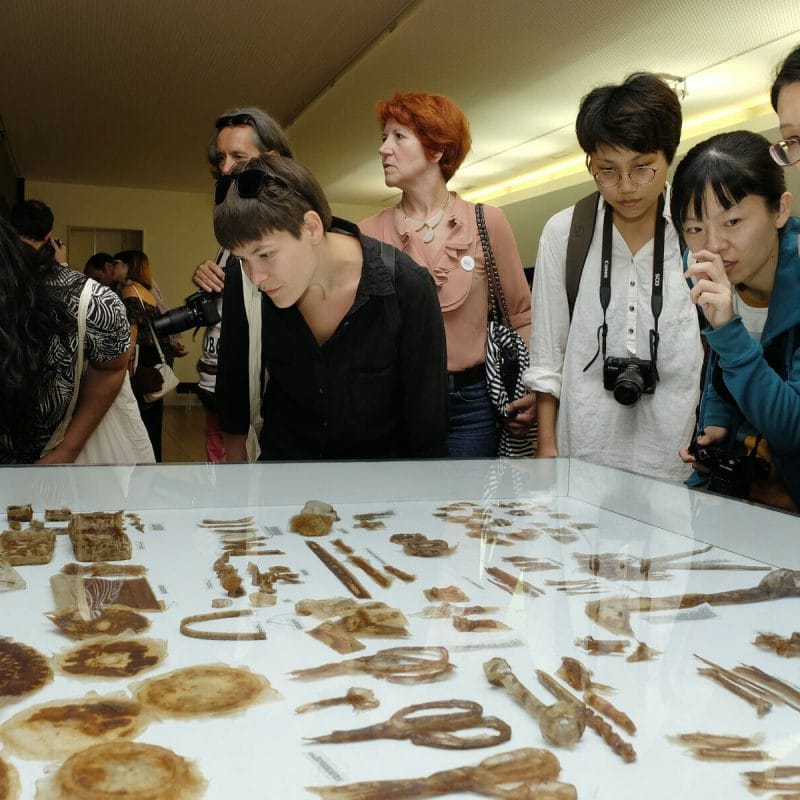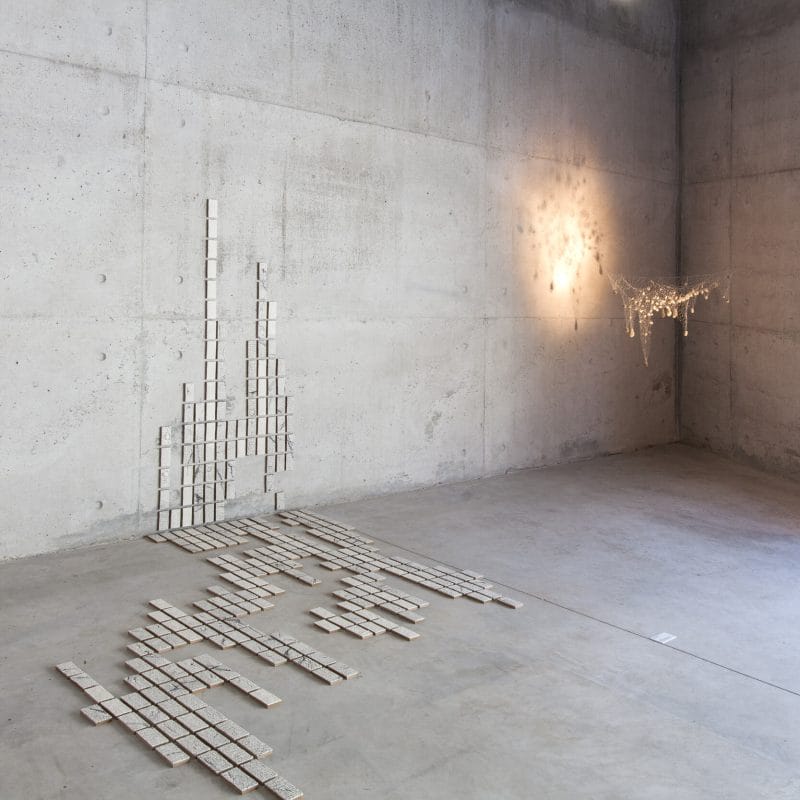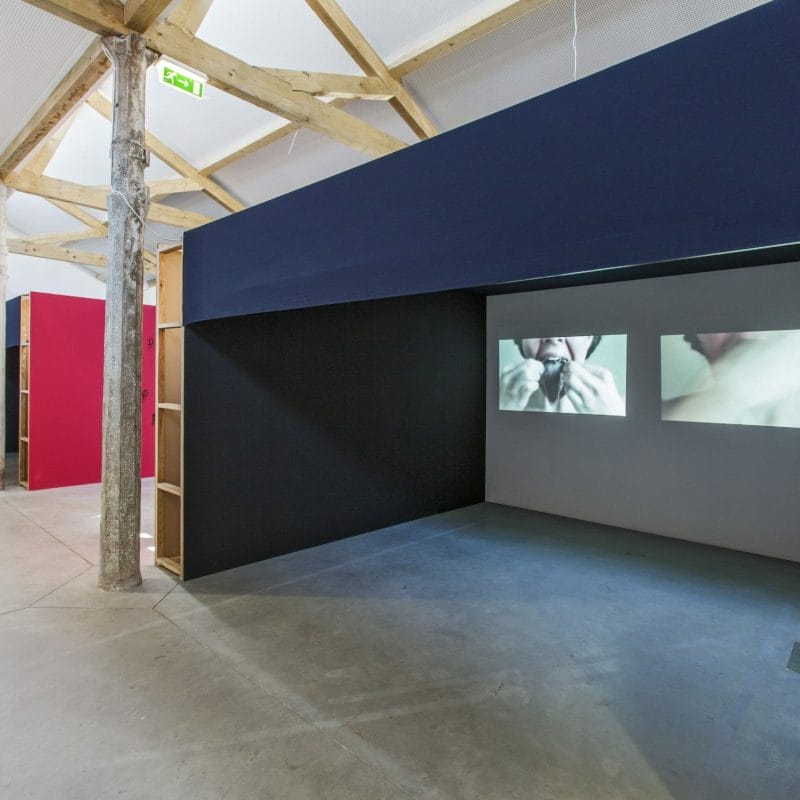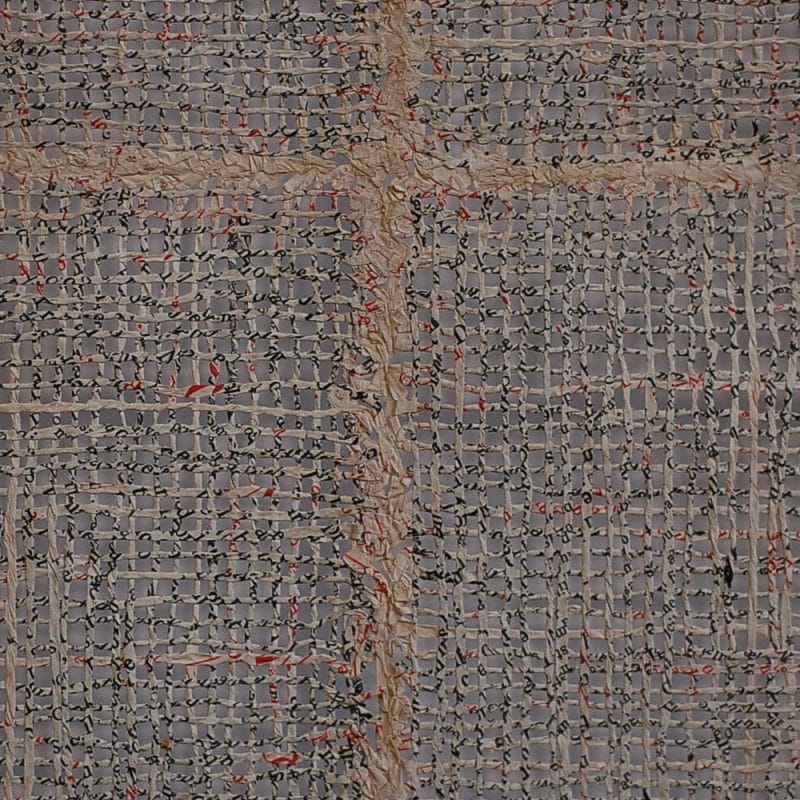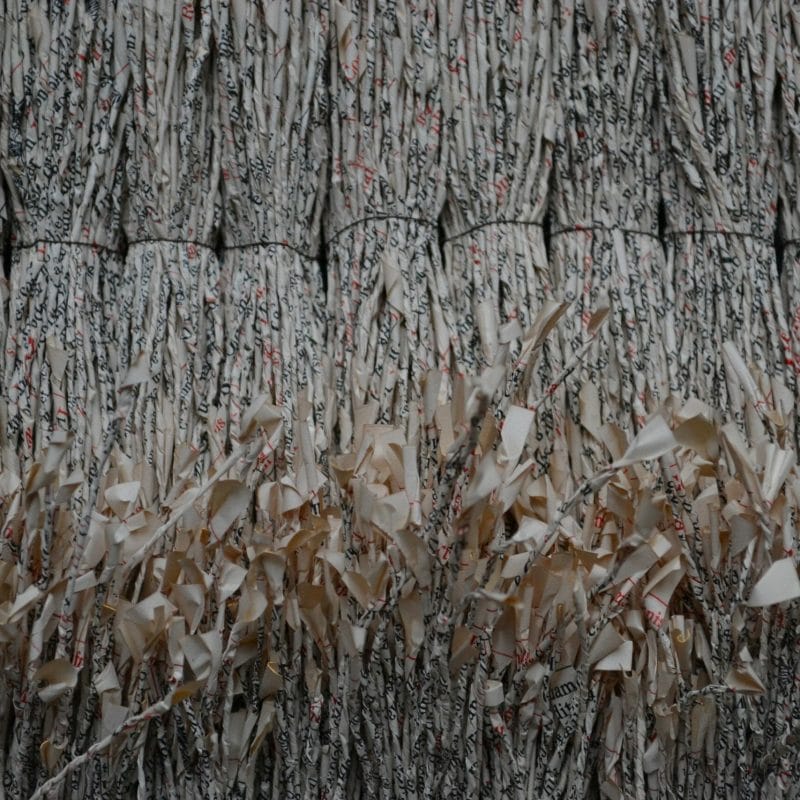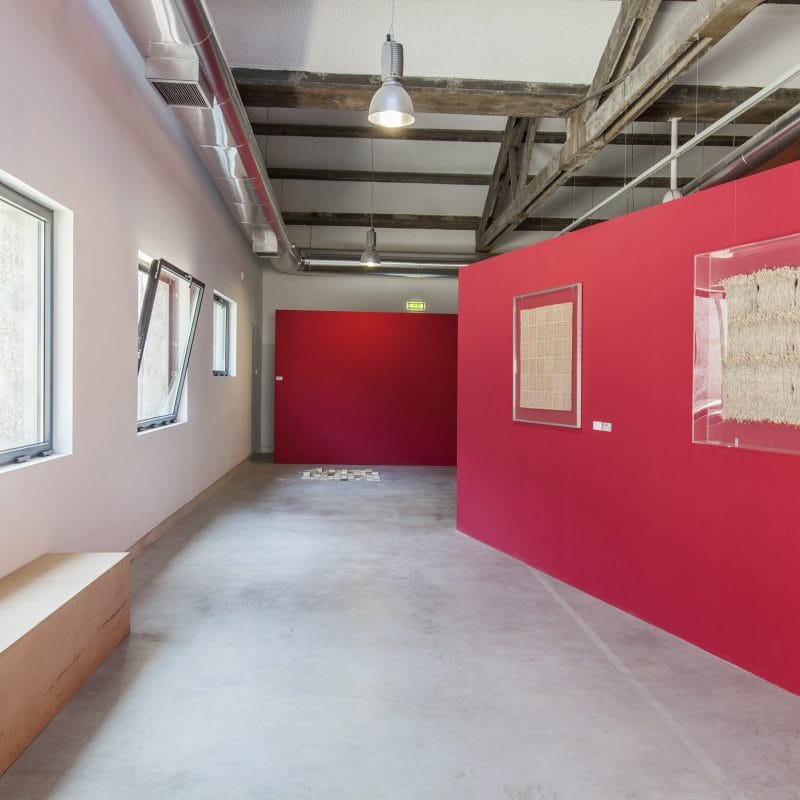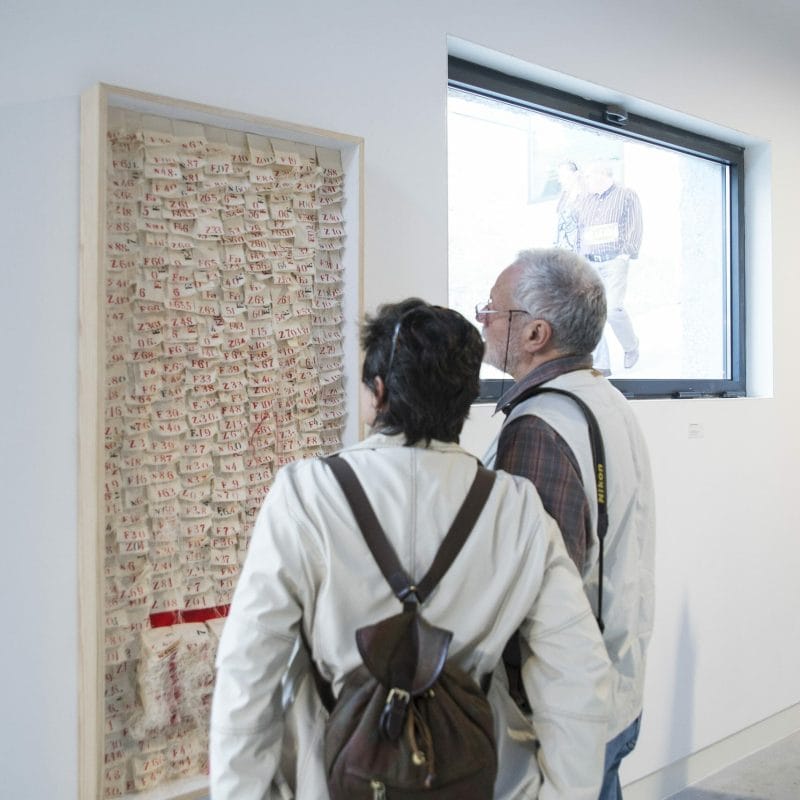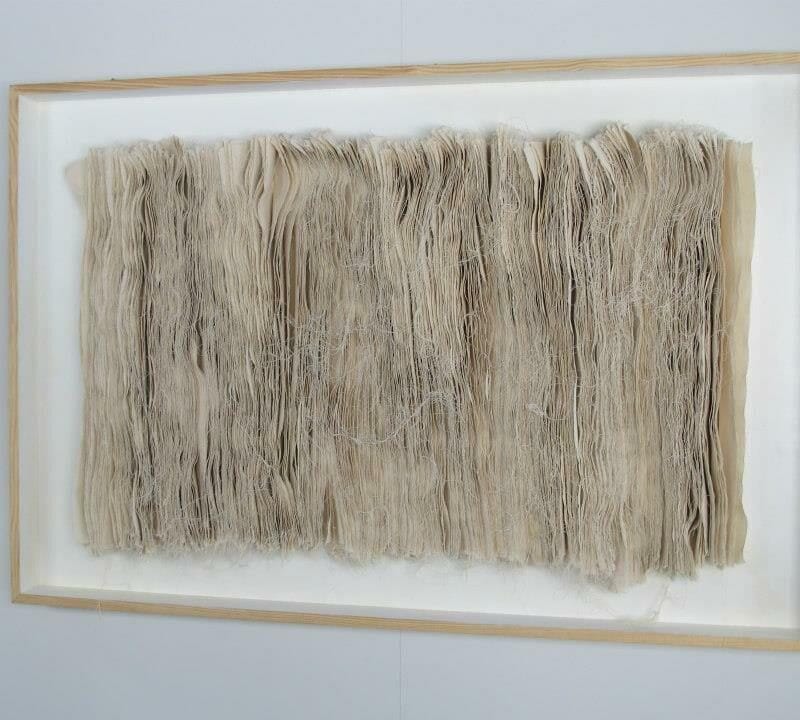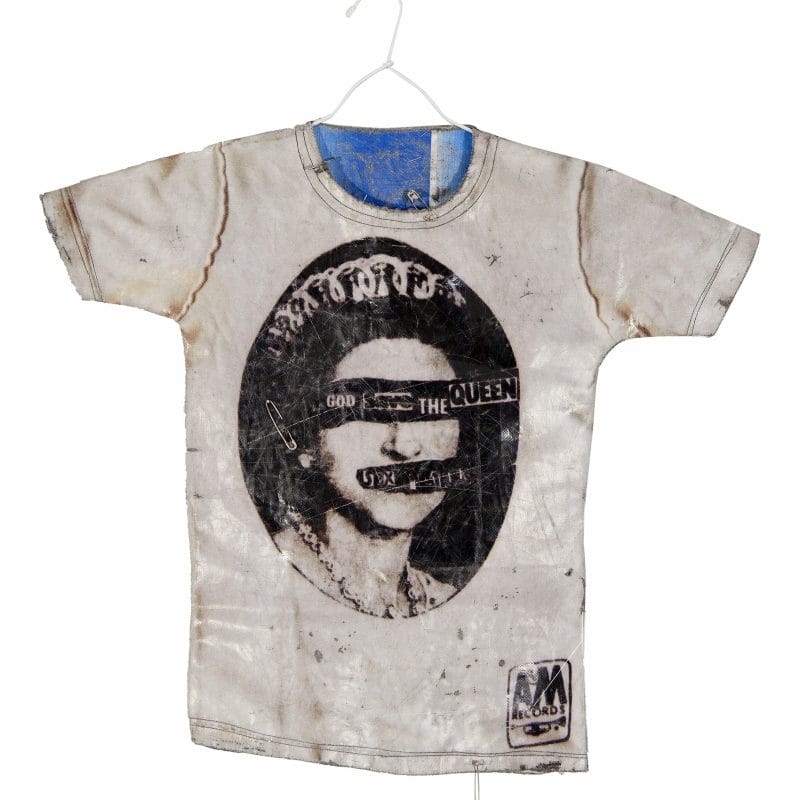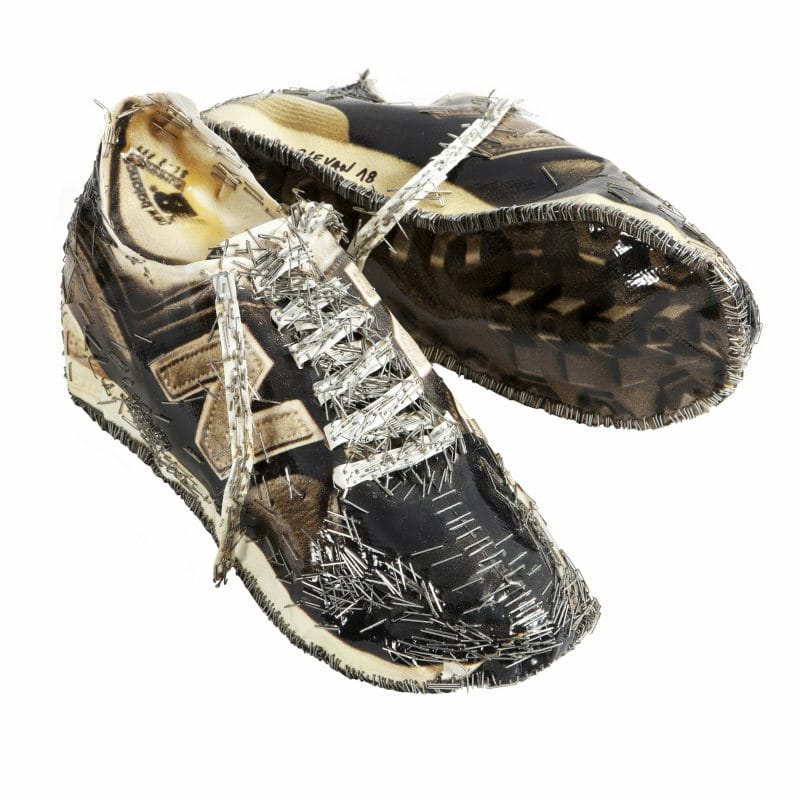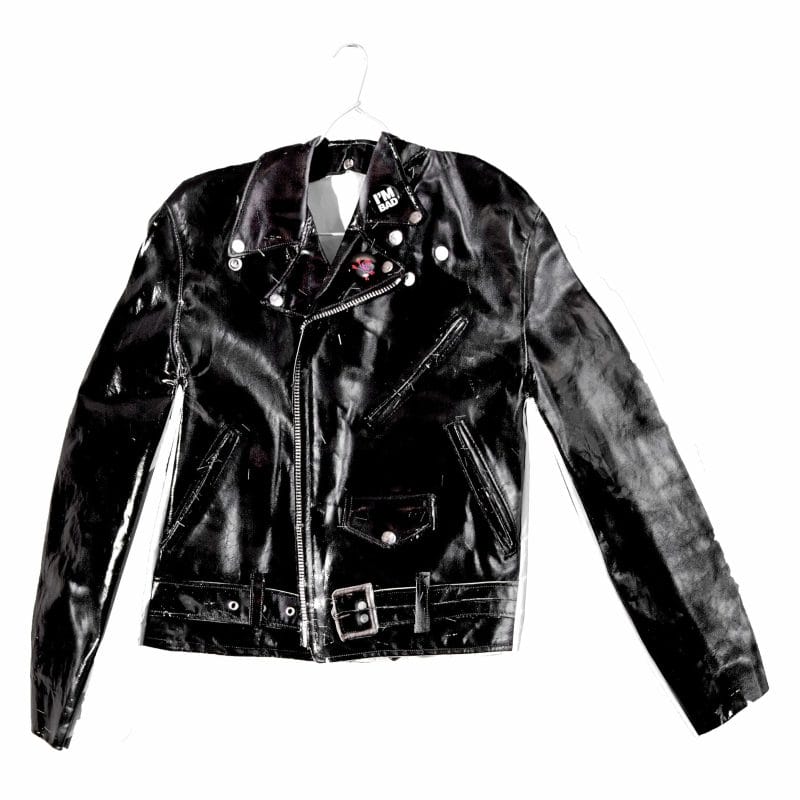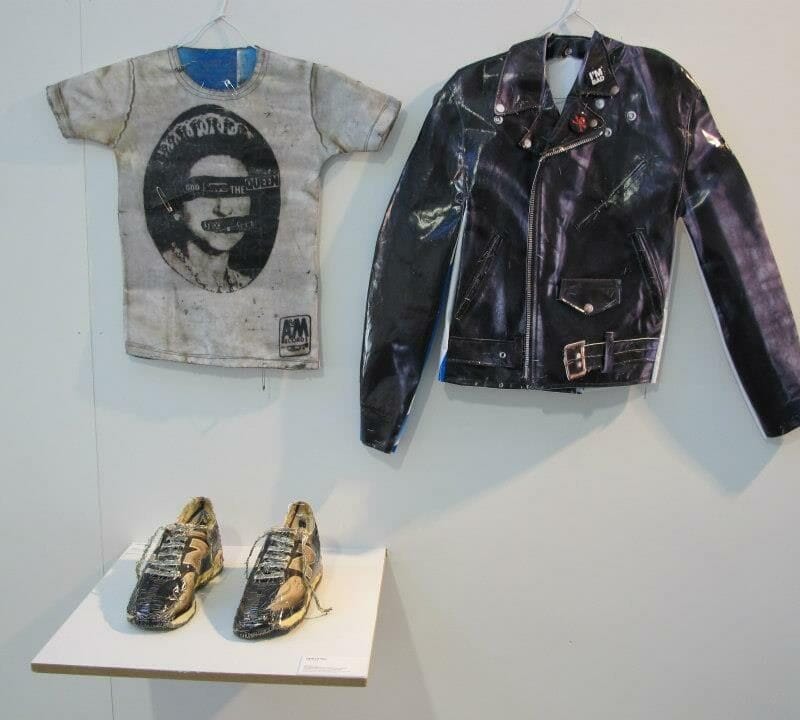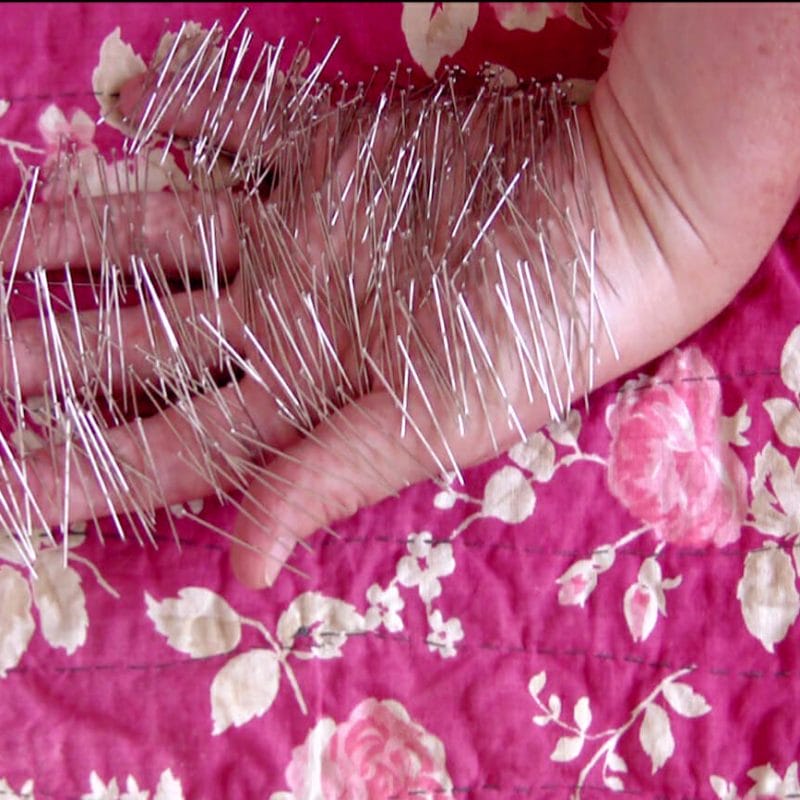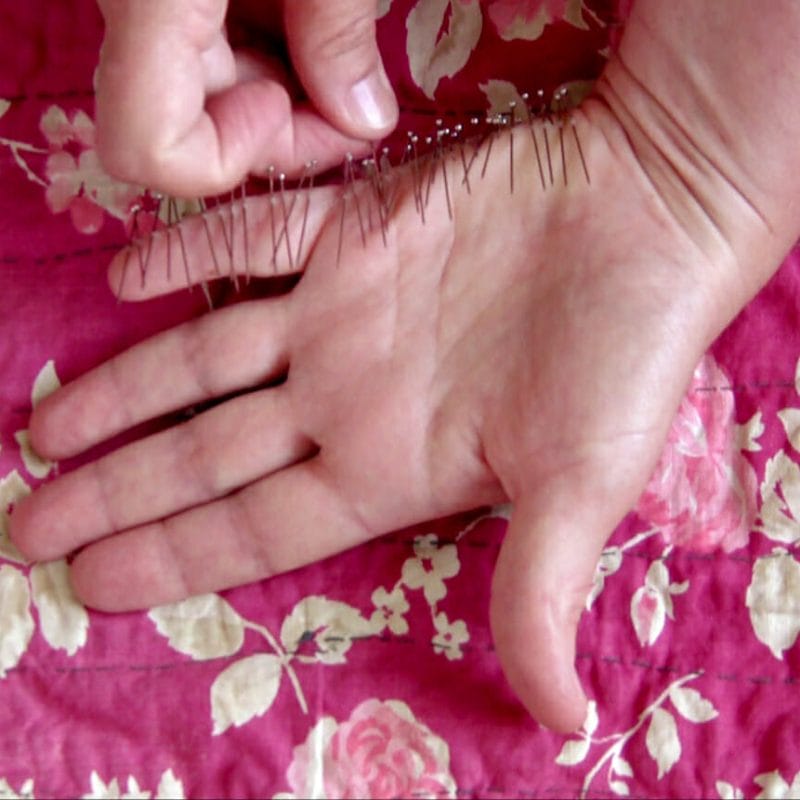CONTEXTILE 2022: PERSPECTIVES AND NEW HORIZONS IN FIBER ART. INTERVIEW WITH CLÁUDIA MELO, ARTISTIC DIRECTOR
The sixth edition of CONTEXTILE Biennial, an unmissable event all dedicated to this language of contemporary art, opens on 3 September. It offers an international overview of artists, works, and research, as well as more and more opportunities for interaction and comparison for a wide audience and an increasingly numerous and heterogeneous public.
Claudia Melo, artistic director of the event, tells us about CONTEXTILE 2022, a starting point for tracing a balance of the road already travelled through the previous editions and an occasion for looking ahead to future projects in a constant evolution that not even the difficulties caused by the pandemic in the last two years have been able to stop.
CONTEXTILE is an event that continues to grow and expand from one edition to the next. What are the new features of this biennial? How is this edition different from previous editions?
CONTEXTILE appears in 2012 as one of the projects integrated in Guimarães European Capital of Culture and celebrates 10 years of existence, in 2022.
The idea that gave rise to this biennial (and which still remains the conceptual basis for the structuring and programming of each edition) is to place textiles in the context of art, enhancing the synergies between art and textiles, artists, communities and the territories.
The whole dimension of textiles in art is thought and worked on, starting from a territory of Portuguese textile culture that is Vale do Ave (and more specifically Guimarães, the city where the biennial takes place), combining the intrinsic tradition of to make the textile, to the artistic ideations and materializations of the now. The entire textile condition in art is valued, provoked and disseminated.
The connection with other territories of textile culture is one of the factors that characterize the biennial’s action.
CONTEXTILE has evolved naturally and progressively, due to some factors that also characterize the values of the biennial and the team (with an increasingly consolidated constitution and which presents a necessary diversity of positions and thoughts that also enrich this questioning and affirmation of textiles in art), of the increasingly stronger national and international partnerships, essential for a greater and positive contamination of different cultures and the creation of networks for the same purpose – also adding essential values for their growth.
The capacity for impartiality, whether in the selection and invitations, invitations directed to artists, entities and institutions is also a fact that roots the biennial, demonstrating that the quality of the works presented is one of the most important factors for their integration in each event.
The public awareness that is gradually being consolidated (with the awareness that 10 years of existence is still too short for work with national and international audiences) and the proximity of work with artistic education schools with textile departments and their integration in the exhibition results of the biennial are essential for the appreciation and deepening for the production of an artistic thought of the textile in art.
In 2020 we managed to make an edition marked by the covid-19 pandemic, naturally forcing different work schemes and methodologies from what we had experienced until then – remote work with artists, for example, conditioning access to the public) which meant also a reduction in programming. In 2022, and allied to the fact that CONTEXTILE’s host city also celebrates 10 years of European Capital of Culture, the programmatic strategy was designed as a situation point trough this decade, so that there was a bigger appropriation of the city (public space) in order to allow a greater relationship physical proximity to the community, either through their collaboration in artistic interventions or through contact with the works and exhibitions that punctuate the city. The 2022 biennial occupies 15 different spaces in the city (among museums, art spaces and public spaces), also expanding its territory of action and making the city its natural and intrinsic stage.
We will have with us a renowned international artist – Ibrahim Mahama – who will make 2 large-scale interventions in public spaces, whose work aroused our interest precisely because of his interest in the identity issues specific to a territory, putting it in dialogue and relationship with other cultures. and identities and also inviting the community to participate in the interventions.
Continuing the importance of international partnerships, the biennial includes 2 satellite projects in its programming – the collaboration with FITE that appears within the scope of the Cross Season Portugal- France and which presents a mirrored program in Guimarães and Clermont-Ferrand. The other project is Peninsulares in collaboration with Indigo Proyectos, which always aims to promote contemporary Portuguese and Spanish textile art, connecting these 2 territories of economic, social, heritage and artistic proximity.
This edition also features an exhibition that brings together 10 renowned Portuguese artists who have included textiles in their artistic practices, whether through technique, matter or thought-process, from the 60s to the present day, proposing the beginning of the writing of a historical fraction of textile in Portuguese art.
Artistic mediation with the public is also seen stronger in this edition through a program of workshops that will address 10 techniques of artistic textile making.
A novelty is also the implementation of a talk aimed at textile artistic education -Textile Talks – Educational Futures that aims to promote a network and dialogue between different actors and national and international institutions, in textile education, which complements the already well-received Textile Talks that has been carried out throughout all editions and which is assumed as a space for sharing and debating artistic processes.
We also diversify the participation in the generic Textile Talks and, for example, we invited your magazine ArteMorbida, which through its insight pages contributes to promote and disseminate this artistic medium.
And finally, the Emergencies section, which in this edition challenged some national artistic schools to intervene in public spaces, in the area of Couros, promoting a deeper interaction with the territory and the community.
What is the concept of the 2022 edition?
The concept for this edition is Re-Make | Dialogs for a textile culture.
It is a proposition for a new condition to the make, through critical thinking. Change what needs to be changed.
Due to convulsions have the power of putting us in confrontation with the world, imagine in this contemporaneity (the one here and now), a will to re-make, based on critical thinking.
The title is a constructed and polysemic term, resulting of the “space between” the action and the reaction. It operates, in prefix, in origin, in cause, in creation, in construction, in thought, in connection and in transformation. This will be the condition and the possible space for us to think the world and wish to access to some (few) answers, though the multiple intratextual, intertextual and interdependent relations – of the ecosystems, its emergencies and its “- cidals” – body, history, politics, society, economy, territory, ecology. From this condition, cross-dialogues are added, questioning is provoked, and action is taken in mutatis mutandis.
But what changes can we propose? How can we re-make? What are the new materializations of this doing that acts in the “space in between”, based on an urgency of the re-signification of acts and thoughts?
This reflection is proposed from the contexts of textile culture, its inter- and intra-texts, and its possibilities of re-thinking itself and the world in re-make: the textile as matter in potency, its history and importance in the history of humanity itself and in the construction of the world, the conditions of labour, its industry and impacts on territories and their communities.
Textile and art are presented as an action and reaction to time and space, in response to political and social conditions, as an alchemical body, reacting to stimuli, as fiction or fantasized reality and new imaginaries, as an experimental medium attentive to new production ecologies, as a questioner of borders and limits or their inexistence. Thus, the textile and textile art (or the textile in art) are affirmed as incitators and congregators, also able to provoke change and response in a time that is now. Able to make, make again, make again.
A very rich and articulated programme with new collaborations that increasingly make CONTEXTILE an unmissable event but also a reference point from which to observe the evolution of textile art. In your opinion, what role does an event such as CONTEXTILE play today in the sphere of international contemporary art?
CONTEXTILE has as its rhizomatic condition the territory in which it operates, and a factor that is inherent to it – the textile – with all its virtues and abilities, defects, memories and traumas and history. They are conditions that operate transformations of a society, of a culture.
Contemporary art is also made up of transformative issues, it comes from a field of resignifications, understanding, interactivity and participation, the use of new technologies and new materials and the production of knowledge. Mass production and globalization, trading, politics and its transgressions and desacralization are pressing issues. The search for new ways of understanding and doing is the most desirable. There is still a specific dimension that textiles can provide to the artistic dimension. Because it is (always has been) at the origin. Textil has always been there in contact with the body, with space, with and with nature, with life. Because it is transversal and flexible.
CONTEXTILE brings all these issues and more, it has the ability to create synergies between communities and to have an operational model that, far from being perfect, is trying to improve – always in question for a reasonable and consolidated growth.
A biennial that is capable of bringing to itself different audiences and different practices, that combines tradition and knowledge without demagoguery), industry and art, that operates without lobbying and that tries above all to respect its audience through the qualitative demand of the works on display. Recognition in the art world can prove that there is a place for CONTEXTILE and that there is a great desire on the part of artists to be part of it.
Residency and the intervention of art schools: how is the relationship between CONTEXTILE and the territory changing and developing?
The artist residency program is very important in CONTEXTILE’s programming structure. As mentioned, the territory is an extremely important factor for the biennial and through these residencies we can have the artists live in Guimarães for a period of time and explore the territory producing an in situ intervention.
It should be noted here that the connection and collaboration of the local industry is very important for the realization of the projects.
Increasingly, these residences provide a relationship with different entities in the city (artisans such as the embroiderers from Guimarães, the different textile factories, other entities such as the Landscape Laboratory, for example that provide knowledge about the territory), the archives, the vacant spaces and the ruined factories, etc. The projects are always very different and therein lies great wealth, as they also require different collaborations in each edition. They are important because we have many artists (from different countries) working in the same space for a period of time and these sharings between origins and artistic approaches are always very diverse for artists and provoke explorations and understandings and appropriations of the territory that are also very rich.
The outputs of the residences occupy a vacant space in the city – the former hospital of the Convento de Santo António dos Capuchos.
CONTEXTILE’s relationship with schools is a process that has been established since the beginning and that seems to us to be fundamental for the promotion of the study of textile art, through the provocations that we propose to the different artistic schools that have textiles in their curricula (FBAUP, FBAUL, EAAD-UM, Soares dos Reis and António Arroio). Proposals are always based on the concept of each edition and are part of the curriculum.
The results of this process are always exhibited at the biennial, promoting opportunities, a sense of belonging and responsibility for future artists.
As mentioned, in this edition the projects developed by the schools intervene in public spaces of knowledge, in the area of Couros, promoting a deeper interaction with the territory and the communities.
From the privileged point of view of an Artistic Director of such an important international event, what is the status of fibre art and textile art at present in the field of contemporary art?
I think nowadays textile and fiber art are going in a direction of a reflection of the textile in art as a strong medium and its possibilities of expansion, through the potential of the material, techniques of textile making or, in freedom, of the thought of the specificity of this medium. Capable of carrying multiple and rich meanings, textiles articulate multiple layers of social and political meaning and manifest themselves in different material forms.
Thus, the textile is presented as a medium, material, technology or metaphor.
We consider the transversality and universality of the textil´s potential and its capacity for meaning in art, its
uniqueness, authenticity and essence, and the capacity of appropriation, understanding, communicating, making relations or expansions trough the textile universe, its nature and its thought as a real need for expression and representation, whether in evidence, metaphor or essence.
It will be important to think about the presence of textiles in life and art. And in its hybrid competence. It will be necessary to think about the ingrained presence of textiles in our everyday-universal.
The textile (and even more the use of textiles in art) is also revealed through other materials, relationships and expansions, provocations, being able to propose new resignifications whether in architecture and its scales, in anatomy, in social conditions and policies, and no necessary return to the sensorial, to the contact, to the seduction, to the movement.
This edition comes after a very complicated two-year period. What were the greatest organisational difficulties?
Indeed. We deal hard with the complications arising from the current situation – the remaining problems that still persist due to the pandemic and the war installed between Russia and Ukraine. These are factors that make us extremely fragile as a humanity and a social group, and lead to a need to rethink the forms and desires of socialization. And that, on the other hand, from a pragmatic point of view, make the entire logistical and organizational system of the biennial difficult (the exponential cost of transporting people and goods, raw materials and their scarcity, the increase in the cost of labour…). The overall organization cost has increased. It should be noted that CONTEXTILE always counts on support from the Municipality of Guimarães and DG Artes, which is essential for its implementation but does not cover all production costs.

